Signs of food readiness in babies
Introducing solids: why, when, what & how
Solid foods: why babies need them
As babies get older, they need solid food to get enough nutrients for growth and development. These essential nutrients include iron, zinc and others.
For the first 6 months of life, babies use iron stored in their bodies from when they were in the womb. They also get some iron from breastmilk and/or infant formula. But babies’ iron stores go down as they grow. By around 6 months, babies need to start having solid food.
Introducing solids is also important for helping babies learn to eat, giving them experience of new tastes and textures from a range of foods. It develops their teeth and jaws, and it builds other skills that they’ll need later for language development.
Signs that it’s time to introduce solids
Signs your baby is ready for solids include when your baby:
- has good head and neck control and can sit upright when supported
- shows an interest in food – for example, they look at what’s on your plate
- reaches out for your food
- opens their mouth when you offer them food on a spoon.
Most babies start to show these signs by around 6 months, although this can vary.
It’s recommended not to introduce solids before 4 months.
If your baby is nearing 7 months of age and hasn’t started solids, you might like to get some advice from your child and family health nurse or GP.
The best times of day to introduce solids
When you’re first introducing solids, it’s good to offer solids when you and your baby are both happy and relaxed.
This is often after a feed of breastmilk or formula. Babies will still have room in their tummies for a taste of new foods after a feed of breastmilk or formula. But if they’re really hungry before a feed, they just want the breastmilk or formula that they know satisfies their hunger.
As time passes, you’ll learn when your baby is hungry or full, not interested or tired.
Signs of hunger include your baby:
- getting excited when they see you getting their food ready
- leaning towards you while they’re sitting in the highchair
- opening their mouth as you’re about to feed them.
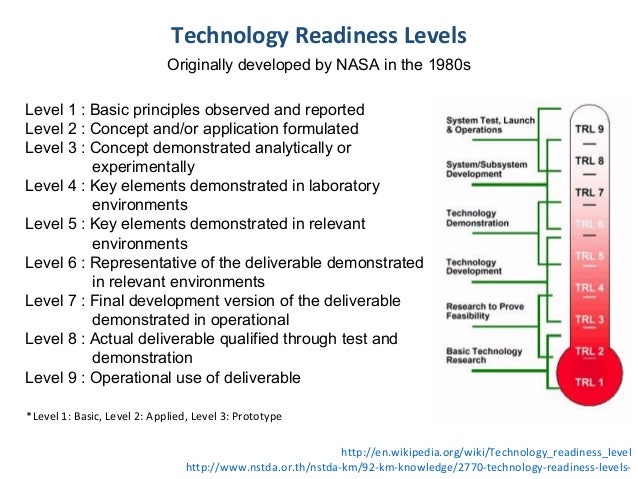
Signs your baby is no longer interested include:
- turning their head away
- losing interest or getting distracted
- pushing the spoon away
- clamping their mouth shut.
Your baby’s appetite can vary from day to day.
How much food to offer when introducing solids
When you’re first introducing solids, try offering 1-2 teaspoons of food once a day. At first, your baby might have only a small taste and probably won’t swallow much.
As your baby grows, you can increase the amount according to your baby’s appetite and signs.
By 12 months, your baby should be eating around 3 small meals a day, plus breastmilk or infant formula.
The right textures for first foods
When your baby is ready for solids, first foods might be smooth or finely mashed, depending on what baby likes. Over the next weeks and months, your baby can move on to roughly mashed or minced foods and then chopped foods.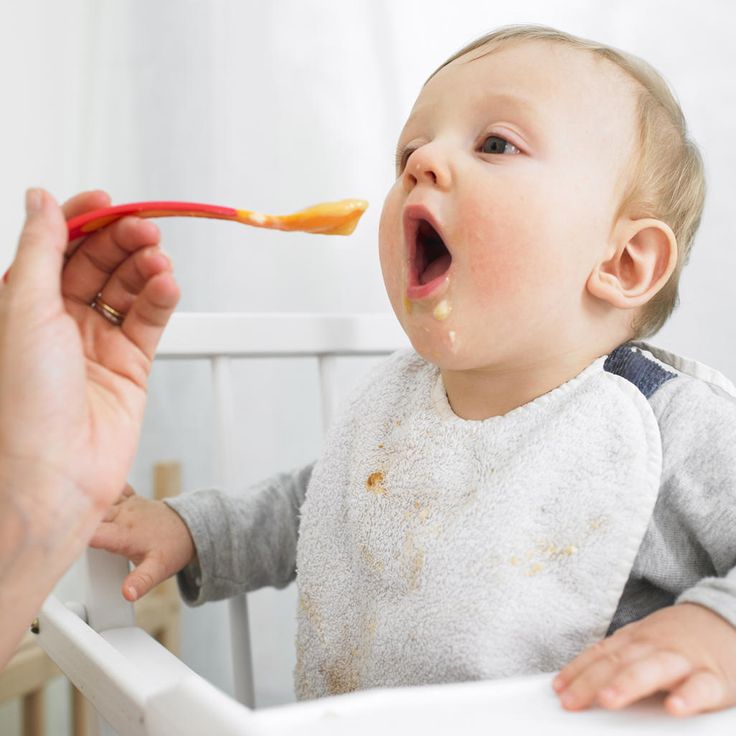 All foods should be very soft.
All foods should be very soft.
Your baby needs a variety of food textures. This helps your baby learn how to chew, and chewing helps with speech development and self-feeding. It also helps to prevent feeding difficulties as your baby develops. Babies can chew even before they get their first teeth.
By the time your baby is 12 months old, they should be eating the same foods that the rest of the family is eating. But you might still need to chop some foods into smaller pieces and cook vegetables until they’re soft.
To prevent choking, always supervise babies and young children while they’re eating solid food. Avoid nuts, take special care with pieces of meat and check fish for small bones, because these are choking hazards. And if your baby can move around, make sure baby is sitting down while they’re eating. If you sit with your baby while they’re eating, baby is less likely to move around.
Types of food to offer when introducing solids
All new foods are exciting for your baby.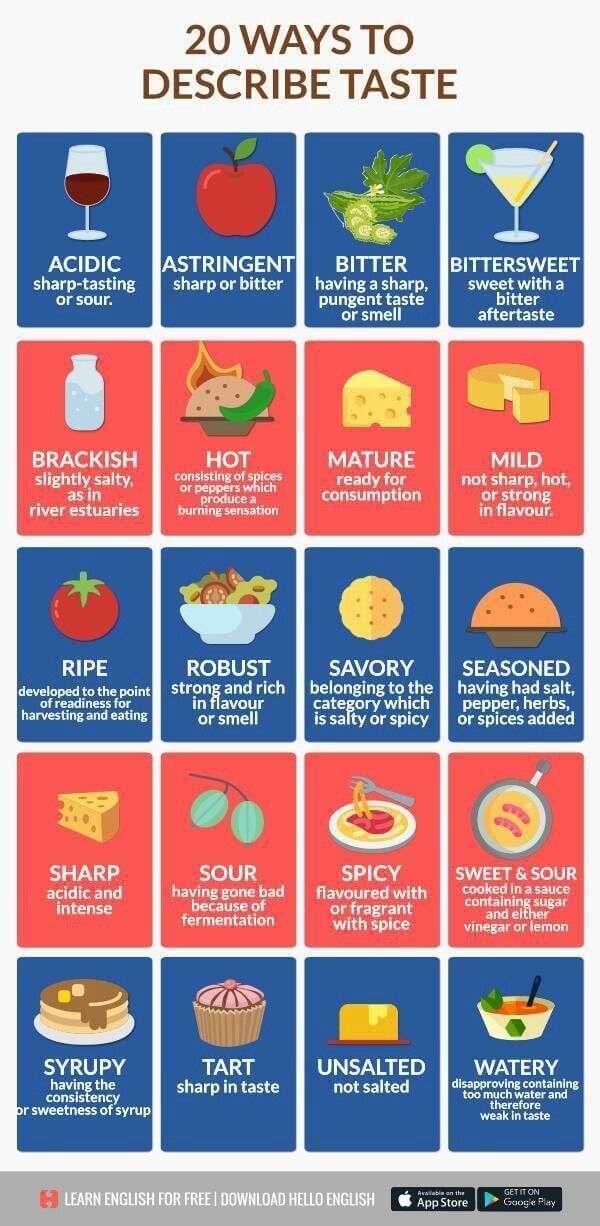
The key is to include iron-rich foods of the right texture in your baby’s first foods. Iron-rich foods include:
- iron-fortified infant cereal
- minced meat, poultry and fish
- cooked tofu and legumes
- mashed, cooked egg (avoid raw or runny egg).
To these iron-rich foods, you can add other healthy foods of the right texture like:
- vegetables – for example, cooked potato, pumpkin, sweet potato, carrot, broccoli or spinach
- fruit – for example, banana, apple, pear, melon or avocado
- grains – for example, oats, bread, rice and pasta
- dairy foods – for example, yoghurt and full-fat cheese.
You can introduce any number of new foods at a time and in any order. When you offer your baby a variety of foods, they can try plenty of new tastes and get a range of nutrients.
Read our tips for introducing solid foods to learn how to get your baby interested in new foods and manage mealtime mess and play.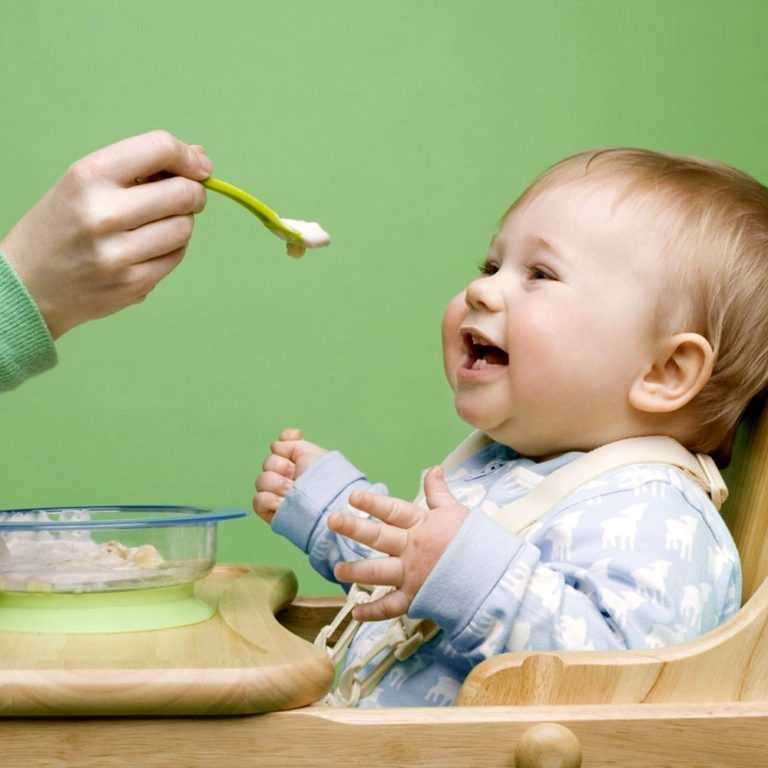
Breastmilk and infant formula while introducing solids
You should keep breastfeeding or using infant formula until at least 12 months.
When you start introducing solids, breastmilk or infant formula should still be the main source of your baby’s nutrition. Over the next few months, your baby will start having more solids and less milk or formula. The rate that this happens will vary.
By around 9 months, babies have generally developed enough chewing and swallowing skills to move from having milk before solids to having milk after solids.
Here are some signs that your baby is getting enough nutrition from both solids and breastmilk or formula during this time. Your baby:
- has plenty of wet nappies – at least 6-8 wet cloth nappies or 5 very wet disposables in 24 hours
- is alert and mostly happy after and between feeds
- is gaining weight at about the right rate – your child and family health nurse will weigh your baby at your regular check-ups.

From 12 months onwards, solids should be the main source of your baby’s nutrition. Your baby doesn’t need infant formula after 12 months, but you can keep breastfeeding for as long as you and your baby like.
If solid food replaces breastmilk and/or infant formula too quickly, babies can miss out on important nutrition. If you have any concerns about your baby’s feeds or weight, talk to your midwife, child and family health nurse, lactation consultant or GP.
Introducing water
Once your baby has reached 6 months, you can start to offer baby cooled, boiled water in a cup at mealtimes and at other times during the day. This is so your baby can practise drinking from a cup, but baby still doesn’t really need fluids other than breastmilk or formula at this age.
Once your baby has reached 12 months, you can offer fresh tap water without boiling it.
Foods and drinks to avoid while introducing solids
There are some foods to avoid until your baby is a certain age:
- Honey until 12 months – this is to avoid the risk of infant botulism.
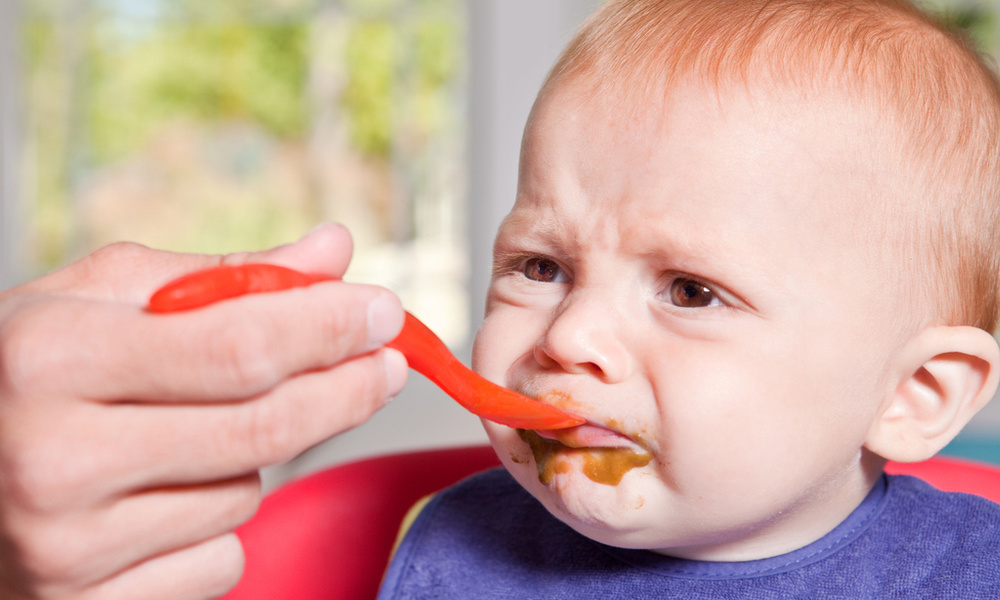
- Raw or runny eggs and foods containing raw eggs like home-made mayonnaise until 12 months – bacteria in raw eggs can be harmful to babies.
- Reduced-fat dairy until 2 years – babies need full-fat dairy for growth.
- Whole nuts and similar hard foods until 3 years – these are choking hazards.
There are some drinks to avoid until your baby is a certain age:
- pasteurised full-fat cow’s milk as a main drink until 12 months
- dairy alternatives like soy, goat’s, sheep’s, rice, oat, almond and coconut milk until 2 years, unless your GP or child and family health nurse has recommended these for a particular reason
- unpasteurised milks at all ages
- tea, coffee or sugar-sweetened drinks at all ages
- fruit juice – this should be limited at all ages (whole fruits are better because they have fibre and help babies develop chewing and feeding skills).
Your baby doesn’t need added salt or sugar.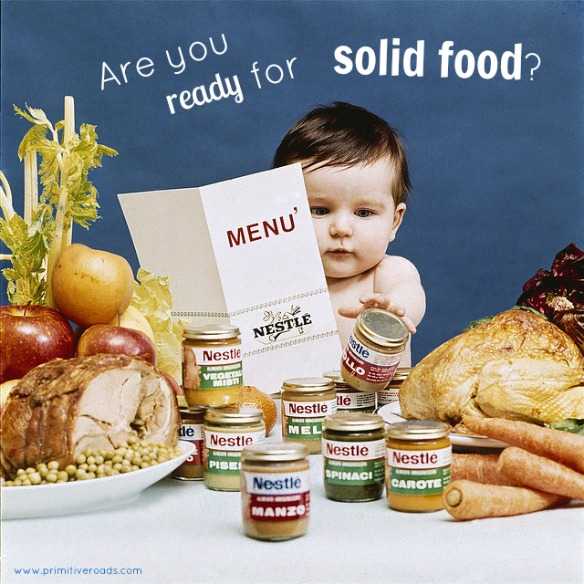 Processed or packaged foods with high levels of fat, sugar and/or salt aren’t good for babies and children. These foods include cakes, biscuits, chips and fried foods.
Processed or packaged foods with high levels of fat, sugar and/or salt aren’t good for babies and children. These foods include cakes, biscuits, chips and fried foods.
Food allergy and introducing solids
Introducing allergenic foods early can reduce the risk of your child developing food allergy. Allergenic foods are foods that might cause allergies.
All babies, including babies with a high allergy risk, should try solid foods that might cause allergies from around 6 months of age. These foods include well-cooked egg, peanut butter and other nut butters, wheat (from wheat-based breads, cereals and pasta) and cow’s milk (but not as a main drink).
Once you’ve introduced an allergenic food, it’s a good idea to regularly include it in your baby’s diet.
It’s a good idea to get advice from your GP, child and family health nurse, dietitian, paediatrician or allergy and immunology specialist for the following reasons:
- Your baby already has a food allergy.
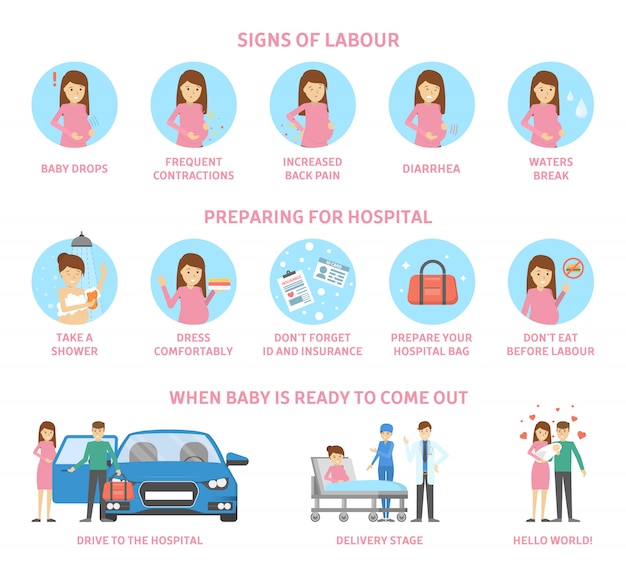
- Your baby has severe eczema.
- Your family has a history of food allergy and you’re concerned about starting solids.
- You’re worried about reactions to foods.
Bite-Sized Milestones: Signs of Solid Food Readiness
Log in | Register
Ages & Stages
Ages & Stages
Listen
Español
Text Size
It’s not coincidental that many of the physical skills necessary to embark on solid food feeding are reached at right about the same time that babies can rise to the occasion. And just when breast milk or formula consumption often isn’t enough to tide them over, their digestive systems become ready to take on the challenge of solid foods. When your baby learns to master the following mealtime milestones, she is likely to be ready, willing, and able to start out on her feeding adventure.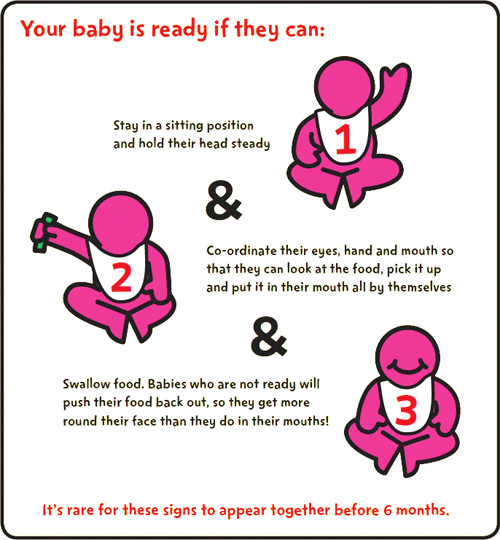
- Hold Her Head Up High. Although some babies are able to lift their heads in a show of strength from the day they are born, it’s usually not until 3 or 4 months of age that the ability to hold one’s head up consistently higher and for longer periods sets in.
- Sitting Pretty. Babies typically start sitting—albeit initially with a fair bit of propping—at about 6 months of age. Fortunately, several modern-day high chairs and feeding chairs come with convenient recline features that offer additional support for those not quite ready to sit fully upright on their own.
- Big Enough to Take It. As a rough rule of thumb, babies are big enough to tackle solid foods right around the time when they double their birth weight and reach a minimum of about 13 pounds.
- Open Wide. As babies become more aware of the world around them, they also tend to become more interested in food—often watching food intently and opening their mouths in eager anticipation when they see some headed their way.

When your baby starts eating solid foods, be sure to introduce a variety of foods early - to avoid picky eating later on. AAP Pediatrician David Hill, MD, FAAP explains:
- Is Your Baby Hungry or Full? Responsive Feeding Explained
- Starting Solid Foods
- Growing Healthy: Baby Food & Feeding
- Author
- Laura A. Jana, MD, FAAP and Jennifer Shu, MD, FAAP
- Last Updated
- 1/16/2018
- Source
- Adapted from Food Fights, 2nd Edition (Copyright © 2012 American Academy of Pediatrics)
The information contained on this Web site should not be used as a substitute for the medical care and advice of your pediatrician.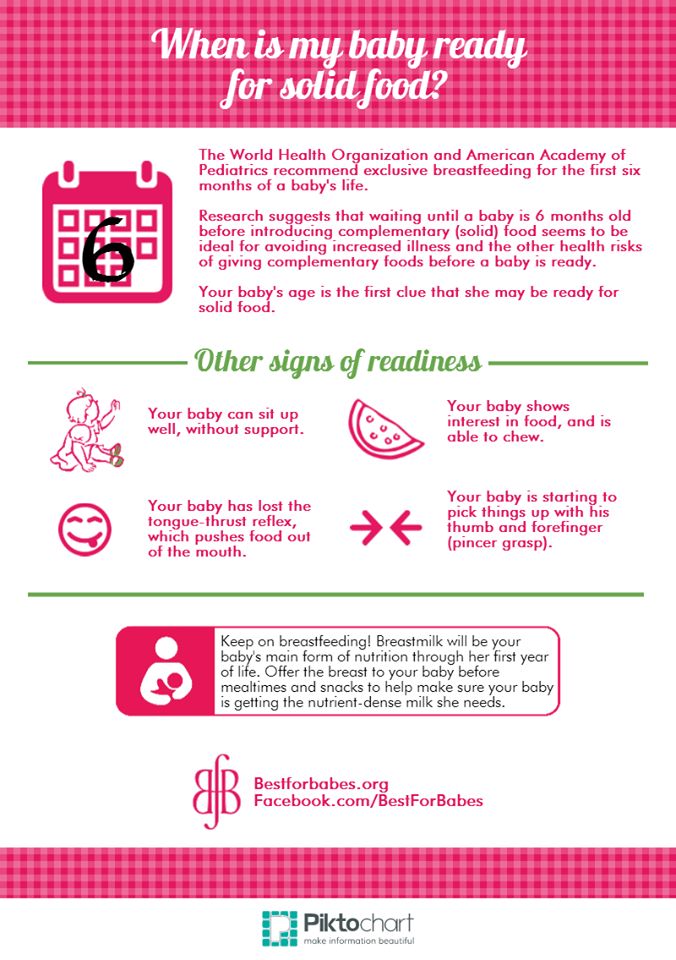 There may be variations in treatment that your pediatrician may recommend based on individual facts and circumstances.
There may be variations in treatment that your pediatrician may recommend based on individual facts and circumstances.
Signs that the child is ready for solid food. Your baby from birth to two years old
Signs that your baby is ready for solid foods. Your baby from birth to two yearsWikiReading
Your baby from birth to two years old
Sears Marta
Contents
Signs that a child is ready for solid food
The child may start begging - reaching for food on your plate, grabbing your spoon, looking at you with hungry eyes and imitating you, such as opening your mouth wide when you open yours while eating.
Sometimes children show more interest in cutlery than in the food itself. If your child is interested in watching you eat, try just letting him play with a spoon (preferably a plastic one - it makes less rumble when it is knocked on the table). If the child is satisfied with the spoon, then the toy is more desirable than the food. If the child continues to show interest and observe you, the pleasure is about to begin.
If the child is satisfied with the spoon, then the toy is more desirable than the food. If the child continues to show interest and observe you, the pleasure is about to begin.
In addition, other signs of a child's readiness are the ability to sit upright in a highchair and take food with thumb and forefinger.
Certain foods at certain ages?
The classic approach to baby food is that children should start with the softest and most insipid foods, moving on to more textured and richer foods after one year of age, and only after two years of age can they get the most allergenic and spicy foods. Our review of baby feeding follows these principles. However, many studies refute this approach, and many peoples give their children food that our Western civilization prefers to avoid. In fact, children can eat any food that is soft enough and difficult to choke on. Our table only suggests certain steps, you are not required to strictly follow this sequence. Children under one year old may well eat something from the list of one and a half year old children.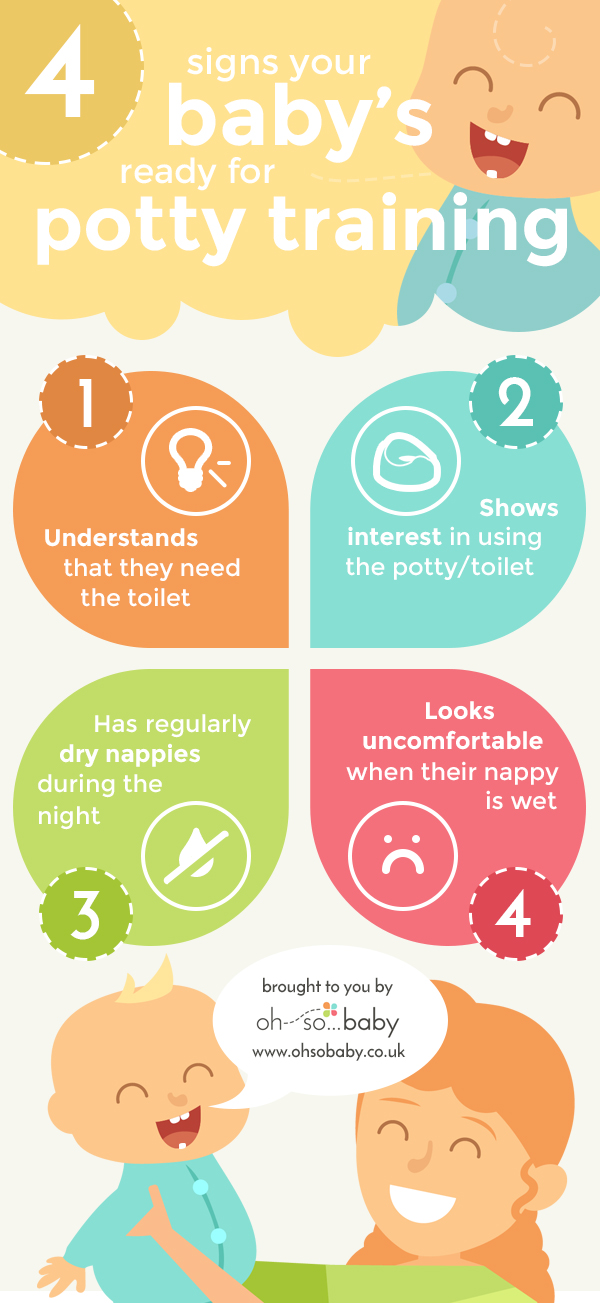 When in doubt if your child is ready for a particular food, use common sense. There are some foods that should not be introduced into the diet for up to a year: peanut butter, cow's milk, seafood and honey . The conclusion is this: if the product is on your plate, it is soft enough for the child, does not belong to the four products that are prohibited for consumption up to a year, then this product can be given to the baby.
When in doubt if your child is ready for a particular food, use common sense. There are some foods that should not be introduced into the diet for up to a year: peanut butter, cow's milk, seafood and honey . The conclusion is this: if the product is on your plate, it is soft enough for the child, does not belong to the four products that are prohibited for consumption up to a year, then this product can be given to the baby.
This text is an introductory fragment.
Crisis 6-7 years, the problem of the child's readiness for school
Crisis of 6–7 years, the problem of the child's readiness for school On the basis of the emergence of personal consciousness, a crisis of 7 years appears. Here are its main signs: 1) loss of immediacy (between desire and action, the experience of what meaning this action will be is wedged
Childbirth readiness test
Test to determine readiness for childbirth • In order to determine if your baby is ready for childbirth, you can do this test: take a watch and put it next to you; sit or lie down comfortably, relax; irritate nipples and areolas with fingers 5-6 times for 1 minute every 3
Eating "Mine eats at fixed hours and never leaves anything on the plate!"
meal "Mine eats at fixed hours and never leaves anything on the plate!" This is one of the basic principles of French education.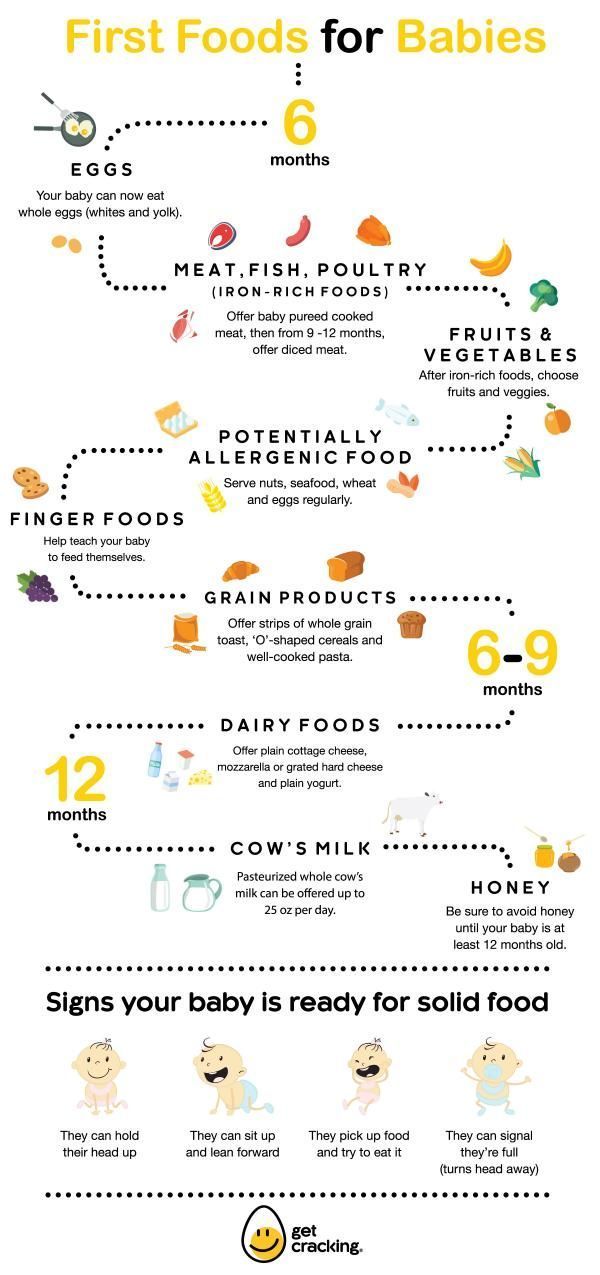 From the cradle, babies are taught to eat at strictly defined hours. Gathered around the newborn, parents make a schedule,
From the cradle, babies are taught to eat at strictly defined hours. Gathered around the newborn, parents make a schedule,
Auditory signs
Auditory signs Loves musical toys. However, if all sorts of sharp and nasty tweeters are installed there, he can flatly refuse such a gift, despite the colorful appearance. When watching movies or cartoons, he may not look at the screen at all. If
Signs of kinesthetic
Signs of kinesthetic What can be said about a child who perceives the world through touch? Yes, there are much fewer of them than auditory and even more so visual ones. But they are! Let's call this child "kinesthetic" and try to "calculate" him among other children. If you choose
43. Meals should be short and pleasant
43.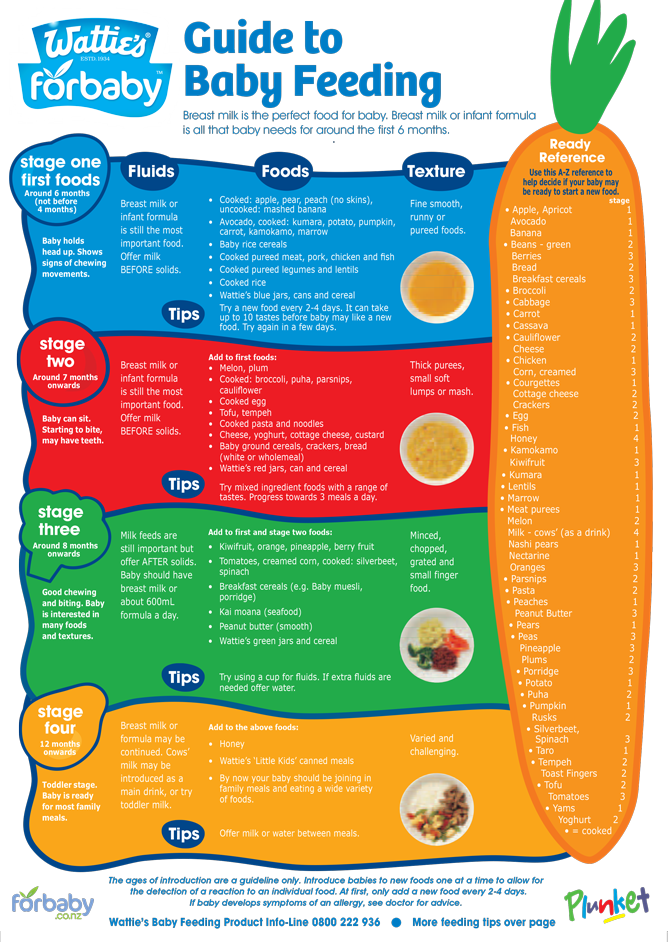 Meals should be short and pleasant Dinner should not resemble a hostage situation. It is difficult for small children to sit at the table for more than half an hour. If they ask to be released, feel free to let them go. Growing up, children will linger at the table longer. В
Meals should be short and pleasant Dinner should not resemble a hostage situation. It is difficult for small children to sit at the table for more than half an hour. If they ask to be released, feel free to let them go. Growing up, children will linger at the table longer. В
11 Solid food introduction: when, what and how
eleven Introduction of solid food: when, what and how During a routine check-up at four or six months of age, I am waiting for the question: “Doctor, when should I start giving solid food?” One day I decided to take the initiative and asked an experienced mother of six children: “How do you determine
Further introduction of solid foods
Further introduction of solid food Starting with a trial dose, go to half a teaspoon, then to a teaspoon, to a tablespoon, then to about 60 g, or half a jar.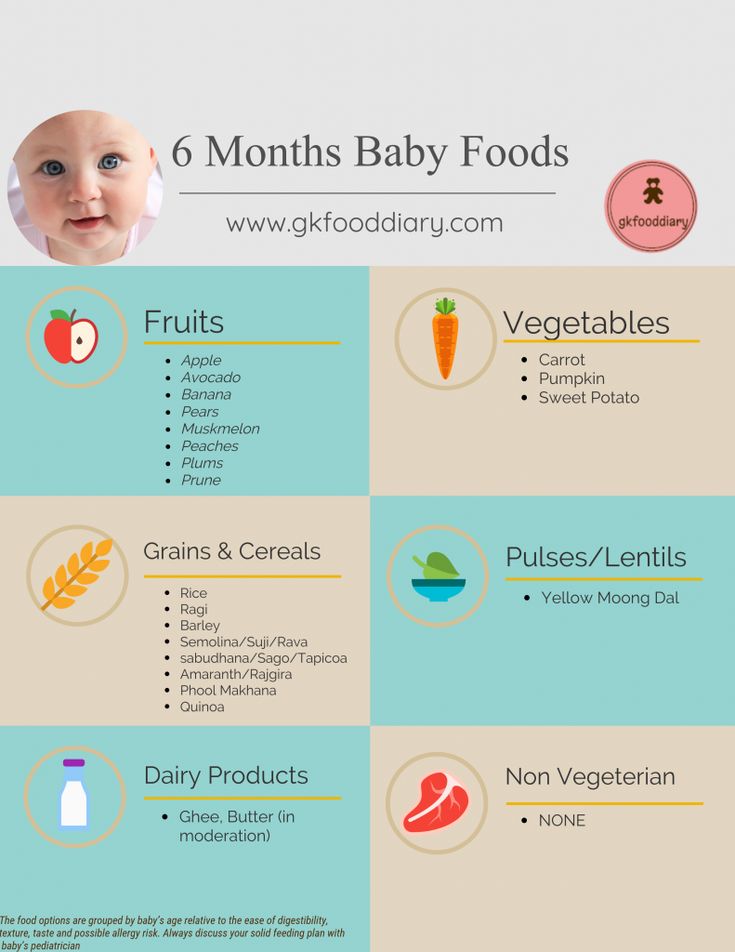 Go from a soupy consistency to a thick one, and then to not quite homogeneous products, from
Go from a soupy consistency to a thick one, and then to not quite homogeneous products, from
How much food to give
How much food to give Remember that a baby's stomach is no bigger than his fist, so don't expect him to eat more in one meal. Be prepared for the fact that the child will eat every time at different times. One day he can eat a whole jar, and the next day only
Safety while eating
Safety while eating • Do you teach your children not to run around the house with a mouthful of food? (This can cause choking.) • Do you take any safety precautions when preparing food? (Whole sausages are dangerous because a bitten off piece can block the trachea
Signs of constipation in a child
Signs of constipation in a child If the child's stool is soft, then no problems arise, even if he pushes. Rather, it is necessary to pay attention if the child hardly pushes out a dryish stool, more like a hard adult stool. This means that
Rather, it is necessary to pay attention if the child hardly pushes out a dryish stool, more like a hard adult stool. This means that
8 signs that a baby is ready for complementary foods
Contents
According to Russian pediatricians, complementary foods should be introduced when the child is six months old. In addition, he must be psychologically and physiologically mature for a new meal. So take a closer look at the child, and our 8 signs that the child is ready for complementary foods will help you with this.
Age 4+
Although the average age for a baby to start complementary foods is six months, some babies need supplemental foods earlier. In this regard, pediatricians have set a lower limit: if necessary, they are allowed to introduce complementary foods to babies from 4 months, but not earlier. If the baby is premature, the gestational age is taken into account (it is counted from the date when the baby was supposed to be born under normal conditions).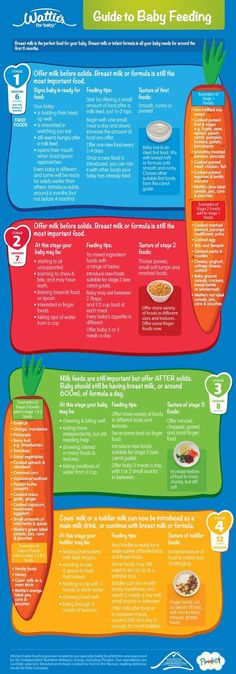
To get acquainted with a new food, the little one needs to double the weight that he had at birth. So, if he was born weighing 3 kg, then at the time of the start of complementary feeding he should weigh 6 kg.
The exception is 2 groups of babies: premature babies should increase their birth weight by 2.5 times, and for patients with rickets, malnutrition, persistent spitting up, the pediatrician may recommend the introduction of complementary foods earlier, regardless of weight.
Interest in food
In order for a toddler to eat well, he must want it. In the first months of life, babies are not interested in any food other than milk from their mother's breasts or formula from a bottle. Therefore, food interest is one of the main signs that it is already possible to introduce complementary foods. At this time, the baby begins to beg, reach for food on your plate, grab your cup or spoon with a pen. Also, the baby looks at his mother with hungry eyes, opens his mouth wide when she opens hers while eating, and imitates swallowing.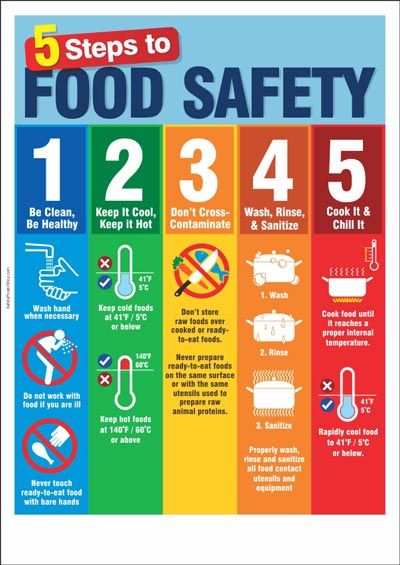
All this means that psychologically the child is already ready to start eating new food, and then it's only a matter of physiology.
The ability to sit
It is obvious that the little one should eat while sitting, so as not to accidentally choke. The exception is patients with rickets and premature babies, to whom pediatricians sometimes prescribe complementary foods earlier than they occupy a vertical position. The rest of the kids can not only sit on chairs, but also lean towards the spoon, and even turn away when they don’t feel like eating anymore.
Well-established digestion
Another condition for starting complementary foods is well-functioning digestion. This is determined by the child's stool. It is important that it be regular, yellowish in color and mushy. The crumbs should not have intestinal colic and constipation.
An immature intestine will not cope with a variety of foods. Usually a lot of enzymes (digestive enzymes) appear in the intestine by the age of 5 months, and in some - only by 7 months.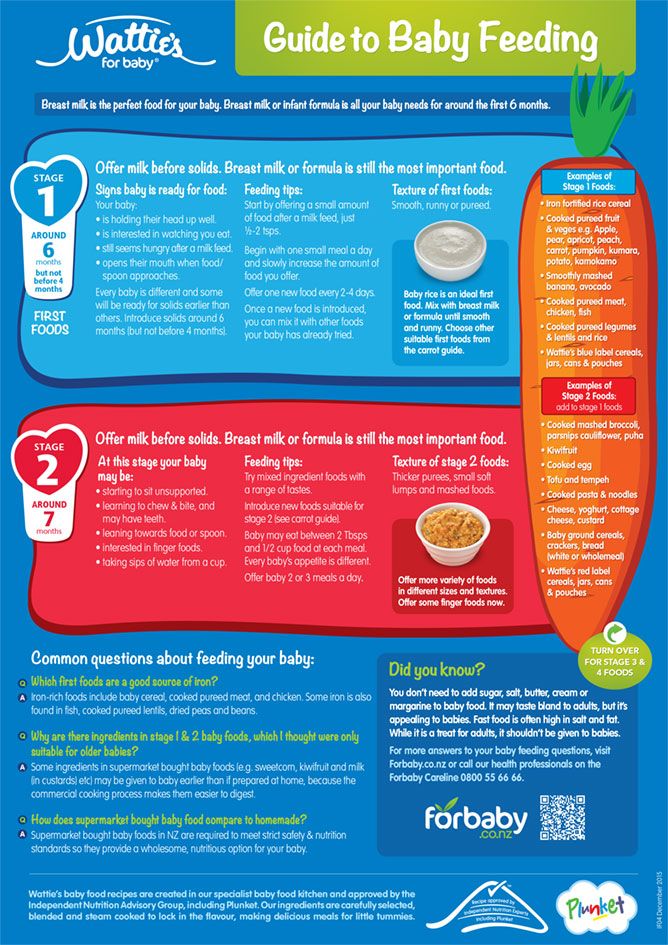 With the introduction of a new food earlier, problems with the stool may appear.
With the introduction of a new food earlier, problems with the stool may appear.
If it is already possible to introduce new food in time, but the baby has constipation, it is better to stop complementary foods for 3-7 days so that the baby restores balance in the gastrointestinal tract and normalizes stools. By the way, the frequency of bowel movements for each child is different, and it varies from 2-3 times a day to 1 time in 1-2 days.
Swallowing skill
Do a simple test: let the baby drink water from a spoon (it also contains complementary foods so that the food is processed by saliva) and see if he swallows it or splashes it on his chin. If the child is already swallowing well and does not push the spoon out with his tongue, this is one of the signs of his readiness to try new foods.
[sc name="rsa" ]
Feeling hungry
Some babies seem to need extra food. This is evidenced by the fact that the baby sucks all the milk from both mother's breasts in one feeding, but does not eat up.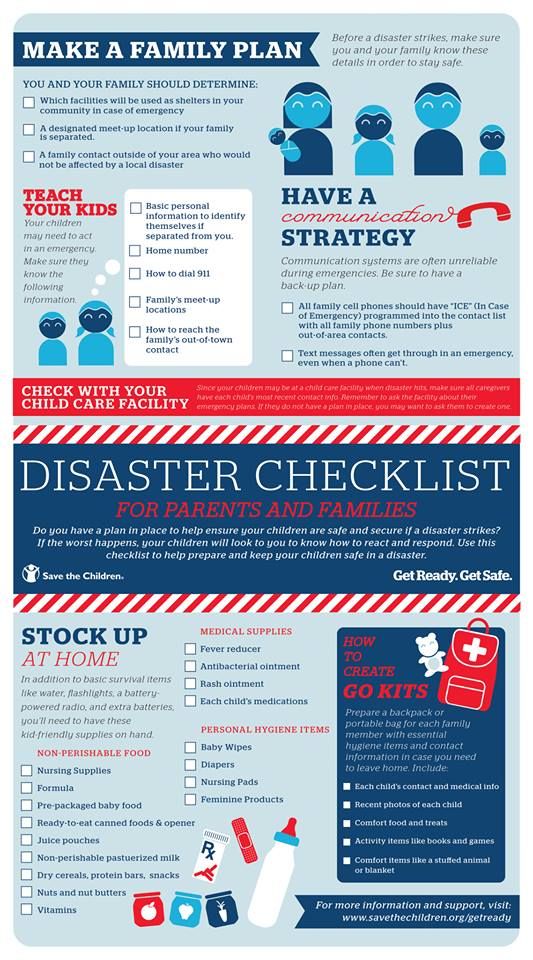 If the child is bottle-fed, he can drink up to 1 liter of formula per day, while remaining hungry. Complementary foods are also necessary if the interval between meals decreases.
If the child is bottle-fed, he can drink up to 1 liter of formula per day, while remaining hungry. Complementary foods are also necessary if the interval between meals decreases.
Absolute health and comfort
It is highly undesirable to start complementary foods when the baby is sick, such as with a cold or colic. Pediatricians forbid supplementing the crumbs with new food before or immediately after vaccinations. Complementary foods can be started only 4-5 days after vaccination. It is not recommended to do this in the heat, when you adults do not have a very good appetite. It is better not to rush and wait - there will definitely come a better moment.
Read also:
- How to Tell if Your Baby is Ready for Weaning - 10 Signs
- Dangerous complementary foods: TOP-5 mistakes of parents
- How to teach a child to eat with a spoon - 10 simple tips
- Formula-fed complementary foods
- Complementary foods according to the rules - a few simple theses
- When and where to start the first complementary foods, how to introduce new foods: basics, tips and rules
- What to do if the child refuses complementary foods (does not eat porridge), and does not want to eat from a spoon
Professor Sergey Nyankovsky tells at what age to start the child’s complementary foods and analyzes the signs of the child’s readiness for complementary foods:
